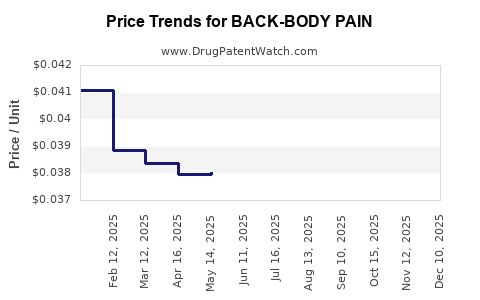Drug Price Trends for BACK-BODY PAIN
✉ Email this page to a colleague

Average Pharmacy Cost for BACK-BODY PAIN
| Drug Name | NDC | Price/Unit ($) | Unit | Date |
|---|---|---|---|---|
| BACK-BODY PAIN 500-32.5 MG CPLT | 70000-0127-02 | 0.04498 | EACH | 2024-11-20 |
| >Drug Name | >NDC | >Price/Unit ($) | >Unit | >Date |


